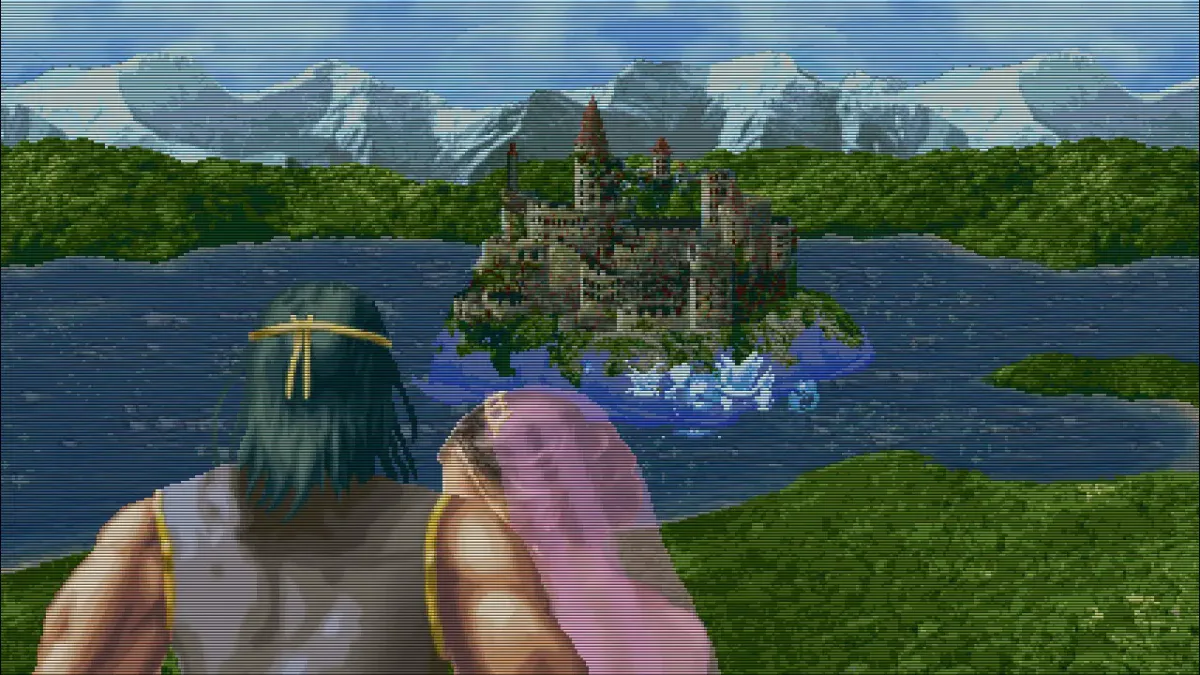
It’s been a long time since the Castlevania franchise added a new entry, and the last place I would expect to see one is in a collection title. Castlevania Dominus Collection’s main conceit is putting all three DS games into one convenient package, but its bonus might be one of the biggest highlights. However, does the collection overall hold up? Let’s find out.
Castlevania Dominus Collection includes six games: Order of Ecclesia (DS, 2008); Portrait of Ruin (DS, 2006); Dawn of Sorrow (DS, 2005); Haunted Castle (Arcades, 1987); and Haunted Castle Revisited, an entirely new reimagining of the arcade game. For whatever reason, the DS games are displayed in that order, not chronologically, while the Haunted Castle games are in an Extras menu. Despite this oddity, the collection is laid out nicely, with everything only a few button presses away.
Aside from the games, you have a gallery with art from the DS games including concept art, art specific to this collection, full resolution character portraits, and even box art and manuals for each region. I love when collections like this include the original packaging materials, and developer M2 almost always delivers on this front. In the next menu over, you can listen to the soundtrack for each game including some special arrangements. You can also add tracks to a playlist rather than seek them out in each sub-menu. Finally, under settings, you can choose what regional version of each game you want to play (American, Japanese, European for all three DS games, and a Korean version for Order of Ecclesia). I probably won’t be playing versions other than the American, though it’s fantastic that they’re included here for those who speak those languages or are just curious.
If you were also curious as to how the Dominus Collection takes dual screen games and puts them on a single screen, the solution is both elegant and a bit restrictive. By default, the collection uses a three “screen” setup. The main gameplay is displayed on the left in the largest window, while just to the right of that are the current area’s map and your character’s status stacked on top of each other. You can swap their vertical orientation by pressing the minus button at any time if you want, though this won’t make either screen any bigger. They are pretty small and might be difficult to read in the Switch’s portable mode (even on the OLED model), so you have a few other screen layouts to choose from.
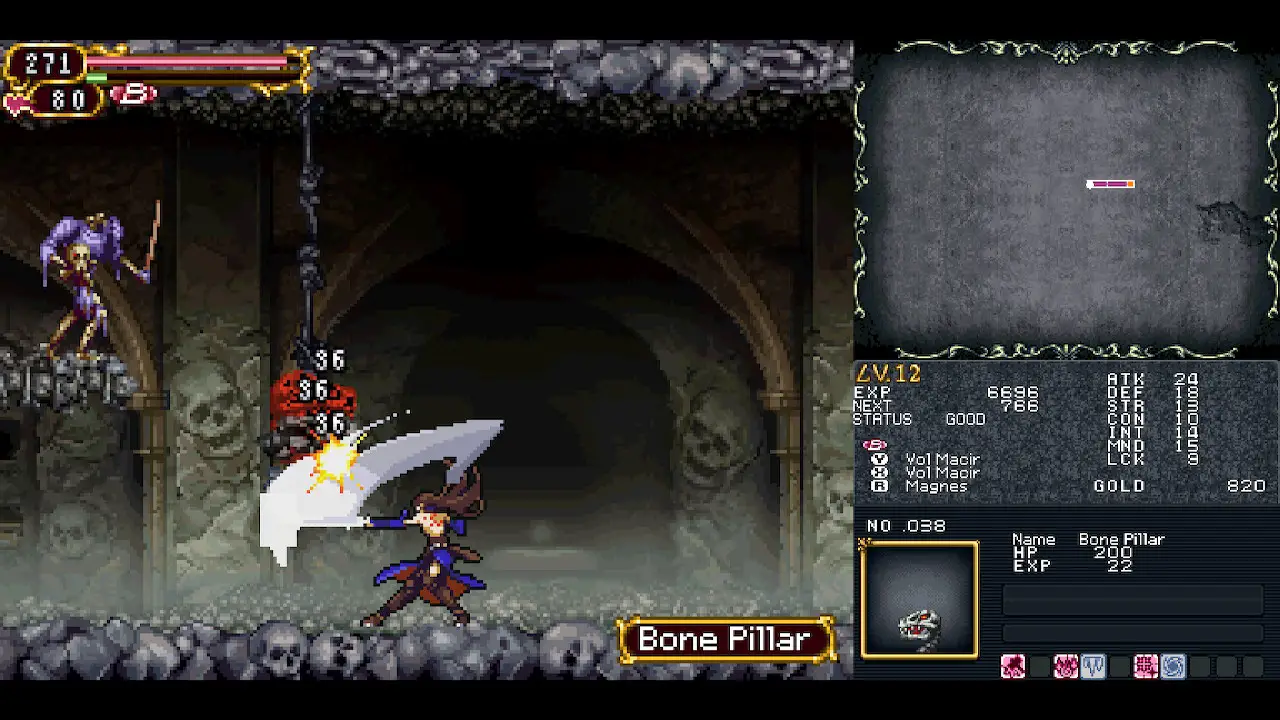
By pressing ZL, you can bring up a special pause menu for the collection. Here, you can save and load files separate from the in game save system (giving you up to 10 total slots as opposed to just 3), rebind controls, view a handy compendium of the current game’s items, weapons, equipment, spells, and enemies, and of course change display settings. The display settings unfortunately leave a lot to be desired, with the default setting being by far the most useful. Other settings have the main screen be larger with the same configuration as the default, making the smaller screens even smaller and harder to read, a side by side with equal size of both screens, a side by side with the gameplay screen being larger, and a setting that mimics the DS’s display with one on top of the other. I really wish there was an option for vertical display, as in you turn the switch vertically to play. That wouldn’t work in TV mode (or on other platforms), but it would have been my go-to setting as it both mimics the DS’s displays and gives each screen a readable size.
In the same sub-menu, you can also change the background color to a few static colors or gradients, change the audio language, and adjust volume settings for BGM, sound effects, and voices. I always prefer a black background so as not to distract from gameplay, but it’s a bit strange that these are just solid colors and gradients rather than artwork, as seen in most collections. Regardless, being able to adjust the volumes is a great touch since I don’t think that was in the original games.
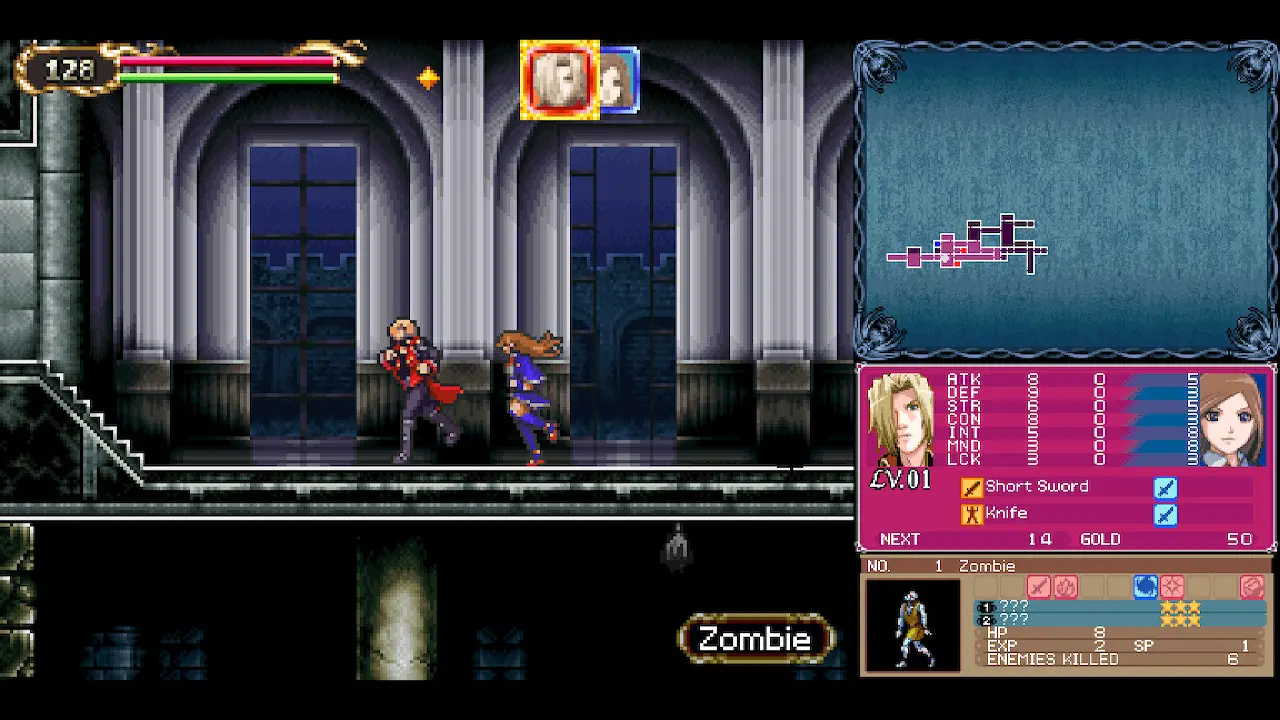
Circling back to controller rebinding, this is a great feature, but again with some drawbacks. Being able to assign each button to an action is amazing, yet you can’t assign every action to every button. For example, by default the collection’s pause menu is on ZL, with back dash on L. Immediately, I wanted to swap these as the bumpers on Switch aren’t the most comfortable to use. While you can assign the back dash to ZL, you can’t assign the pause to L. There are several weird restrictions like this, like you can’t assign clicking the cursor for touch controls to a face button but you can put it on Plus. If I want to screw up my controls, frankly I should be allowed to do so.
Aside from its pause function, holding the collection menu button will bring up a rewind feature, which is incredibly useful and a must for collections like this in my opinion. Again though, it’s a bit odd in its execution as it seems to let you rewind to just about any frame within the past few seconds. This is great for some of the more difficult boss fights with precise attacks, but it also means you can’t rewind very far. It’d have been nice if I could have adjusted the intervals to get a bit more time, but it’s still a very useful feature.
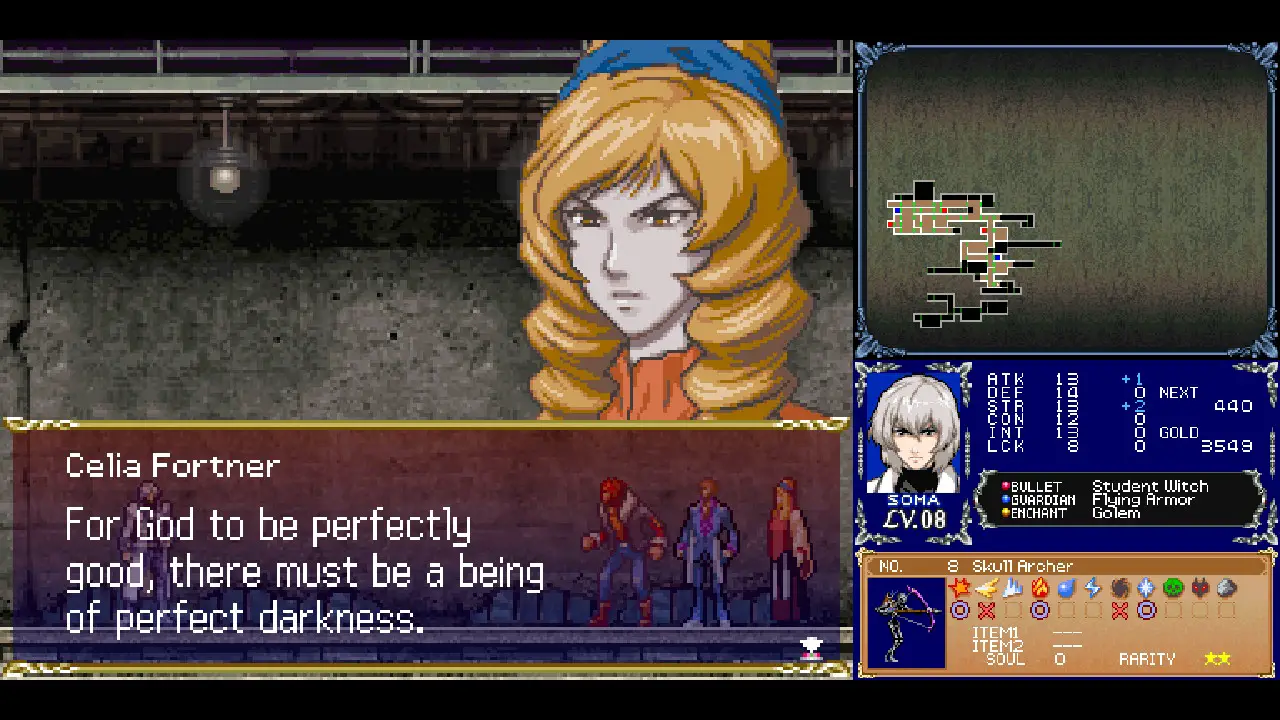
On to the games themselves, while I spent the most time with Order of Ecclesia, all three are a lot of fun and offer a unique take on the series. Ecclesia is mostly linear until you reach Dracula’s Castle, giving it a focused feeling with a village to restore and quests to complete (you can also really tell this is the one Bloodstained: Ritual of the Night drew from). Portrait of Ruin has you play as two characters, fighting enemies and solving puzzles with both of them at once. Dawn of Sorrow is a direct sequel to Aria of Sorrow, once again following Soma Cruz as he collects enemy souls to power up. Finally, Haunted Castle is… certainly an arcade game, while its Revisited version removes all the unfair, quarter munching bits making for a much more solid, classic Castlevania game. It’s a lot of fun and even comes with some extra display settings, including an excellent CRT filter that recreates the scanlines aspect of old televisions. It doesn’t replicate the color bleeding effect, but even so, it’s far better than most CRT filters out there.
While I haven’t played any of these games in their original formats, they seem to be more or less intact. The DS games even run at a higher resolution from those originals, though you can only really see this in the 3D models that occasionally show up. Some games also require the use of the touch screen, and there are two ways to do so on the Switch. One is to just use the touch screen, the easiest and most convenient method, while the other is to use the cursor bound to the right stick and ZR. The latter is a bit clunky, but it works just fine since you can adjust the cursor speed up to three values by clicking in the stick.
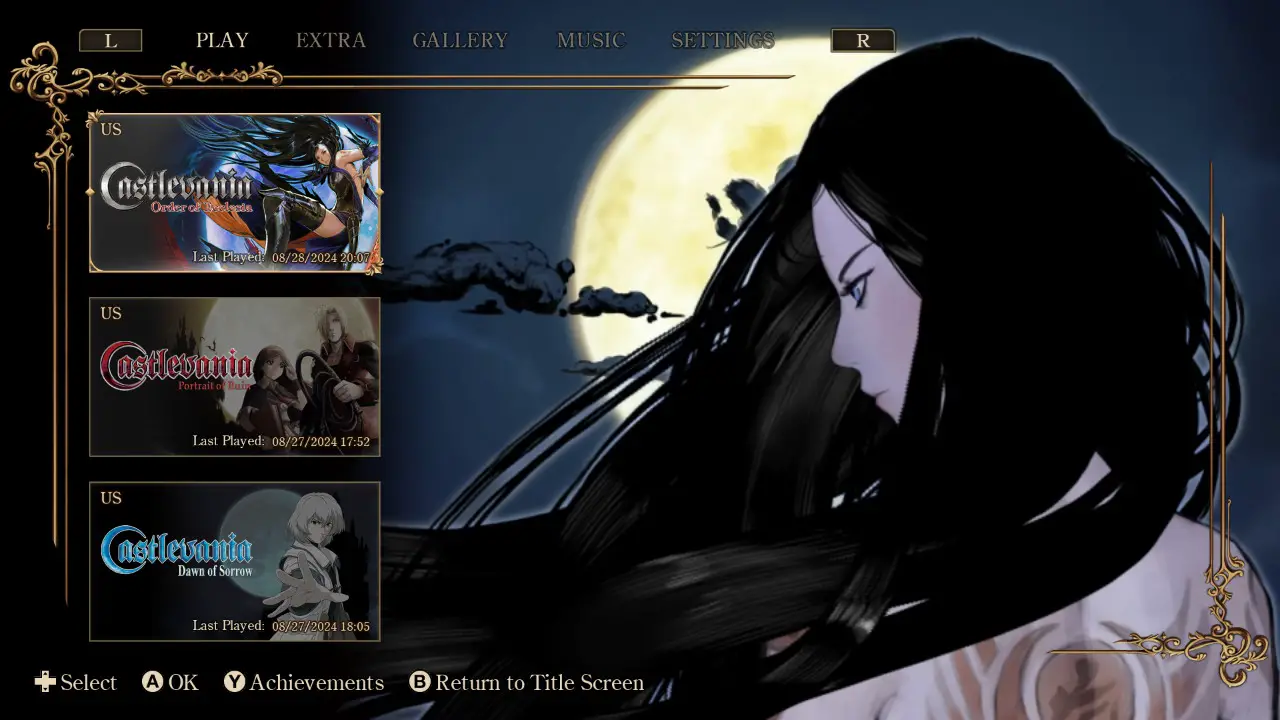
There is one feature that seems to be missing entirely, and that’s the multiplayer. This wasn’t a big part of any of the games, with the most substantial mode being a boss rush, but it’s disappointing that they’re not here. Portrait of Ruin feels like it was made for co-op, but you’ve only ever been able to play with an AI companion. If this collection allowed you to play online or locally with someone else through the whole game, that would have been amazing. Sadly, we’ll just have to imagine what could have been.
Castlevania Dominus Collection
Great
The Castlevania Dominus Collection is another fantastic effort from M2, though it doesn’t quite reach their lofty standard. The games themselves are a ton of fun, looking and playing great with some amazing convenience features. However, some of these features come up a bit short, specifically controller binding and display configurations. Even so, a full reimagining of an arcade game makes up for those shortcomings for the most part.
Pros
- Great games
- Rewind and save states
- Extras like the gallery and music player
Cons
- Most display modes aren’t helpful
- Controller rebinding is weirdly limited
- Removed multiplayer
